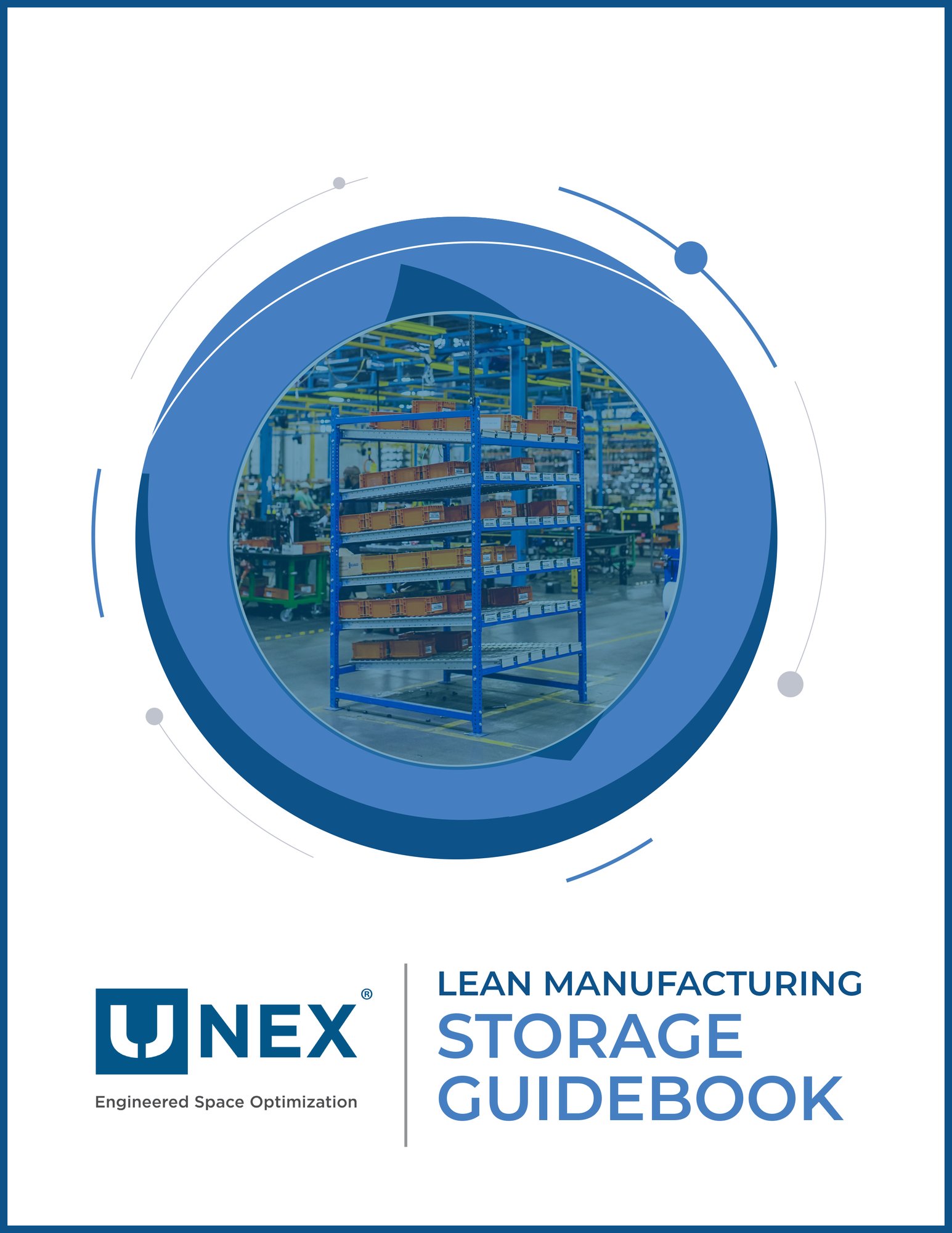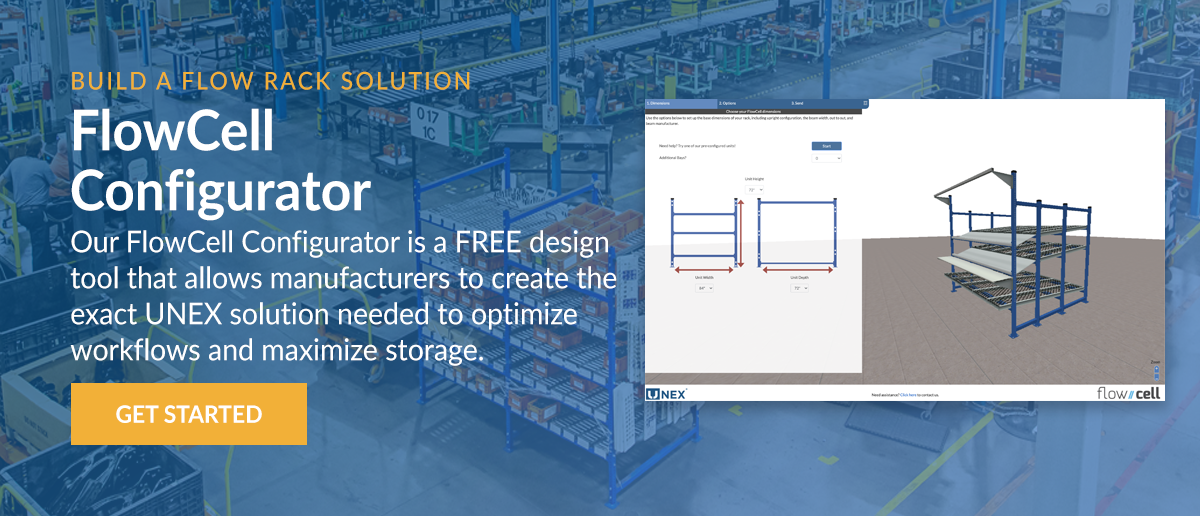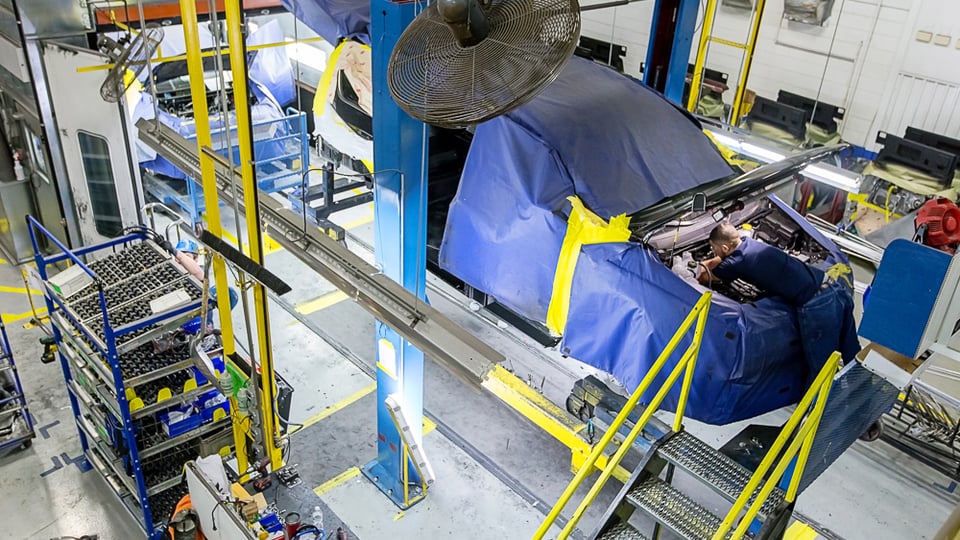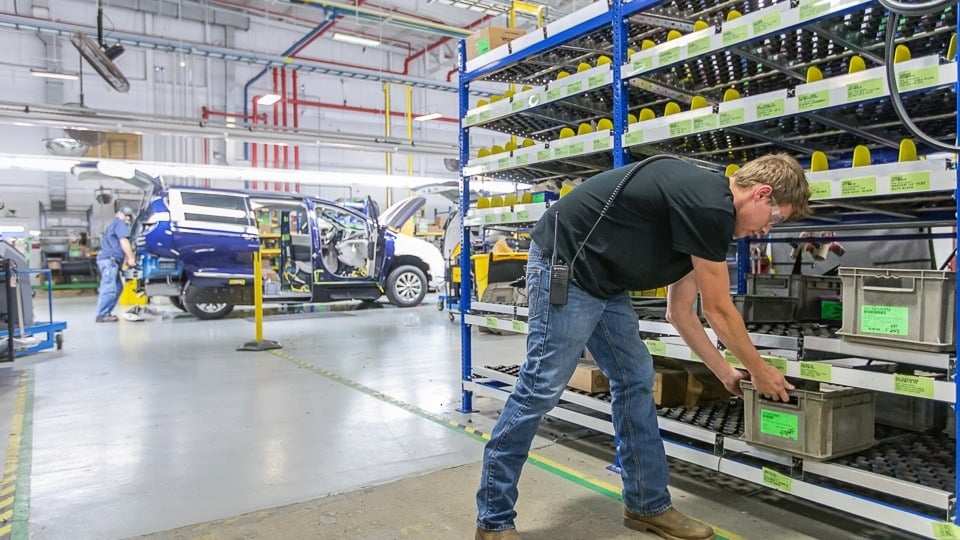Manufacturing in 2025: Key Trends and Predictions for Streamlined Operations

After a massive, pandemic-induced growth spurt in 2021, manufacturing has undergone some growing pains and slowdowns. Labor challenges were one of the dominating factors stalling manufacturing growth in 2024, and companies across the globe have turned to robotics and artificial intelligence (AI) to make their operations more efficient.
Yet, things are looking up for the future of manufacturing as we head into 2025. Overall, the industry is expected to see around 4% growth this year, especially due to slowing inflation and dropping interest rates. Still, supply chain disruptions, labor shortages, and shifting consumer demands will continue to pressure manufacturers to keep pace with changes in technology and methodology.
Whatever outside forces are set to influence the industry, manufacturers must take steps to optimize assembly lines and improve delivery times. Here’s a look at some of the biggest manufacturing trends we expect in 2025.
1. Automation and Smart Manufacturing
No list of manufacturing industry predictions is complete without a look at the impact of automation on production. More than mere robotics, new manufacturing machines are powered by AI to create more intelligent operations.
“Smart factories,” as they’re called, are a driving force behind Industry 4.0, the new era of digital connectivity reshaping the industry. These smart factories leverage this connectivity, along with data analytics and powerful machine learning, to create increasingly intelligent, efficient facilities. Companies like Bosch, Siemens, and General Electric are leading the way in this transformation, and the smart factories market is expected to grow by over 10% per year through 2033.
While manufacturers should take stock of these technological advances and look for ways to implement them, they shouldn’t neglect to support such upgrades with tried-and-true manual systems. For instance, UNEX FlowCell modular workstations integrate seamlessly into automated environments, offering lineside storage or sub-assembly stations to make manufacturing workflows even more efficient. These modular and flexible storage solutions can optimize space and improve material handling in even the most technologically advanced production facilities.
2. Sustainability and Green Manufacturing
It’s no secret that consumers are pushing corporations toward more sustainable practices. Given that the supply chain is currently responsible for 80% of consumer emissions, manufacturers are in the spotlight to do their part in the sustainability revolution.
That’s why one of the key manufacturing trends of 2025 will be an ongoing focus on developing greener production practices, such as reducing waste, cutting energy consumption, and curtailing carbon emissions. These emphases will spur more facilities to follow lean manufacturing trends and adopt other eco-friendly practices, which will help not only mitigate waste but also save money and improve brand perception.
Although such changes may certainly involve the use of technology to make operations more efficient, some solutions are far simpler and easier to implement. Gravity conveyors, for instance, are an eco-friendly option that requires no power to operate, making them an ideal choice for facilities looking to reduce energy consumption. These conveyors are designed to maximize efficiency in material handling without relying on motors, reducing both operational costs and carbon emissions. Their durable construction also minimizes the need for replacements, contributing to less waste and a longer product lifecycle.

3. Space Optimization
If there’s one thing we can say with virtual certainty about the future of manufacturing, it’s that space won’t get any cheaper. Warehouse costs rose to $8.31 in 2024, up from $8.22 in 2023 and $7.96 in 2022. With floor space only getting pricier, space optimization in manufacturing will remain a priority in 2025.
In such an environment, finding flexible storage solutions and inventory management systems is critical for success. Facilities that can maximize space without expanding their footprint will reap not only savings on rent but also major productivity gains. More dense, efficient storage solutions can support faster picking and assembly processes to make operations more efficient overall.
Manufacturers seeking to optimize their spaces to the fullest should look for opportunities to deploy dynamic storage solutions throughout their facilities. UNEX offers FlowCell modular flow racks and Roller Rack gravity flow racks to optimize space in manufacturing operations. For example, these solutions provide accessible lineside storage to maximize part-picking efficiency where it matters most. FlowCell and Roller Rack can also be used to build space-efficient manufacturing supermarkets. Manufacturing supermarkets create miniature distribution centers close to assembly lines, allowing for quick and efficient replenishment of parts and components.
Learn lean manufacturing storage principles. Download the Lean Manufacturing Storage Guidebook!

4. Manufacturing Labor Shortages
Labor shortages have been a big part of the story in manufacturing for the past few years, and that trend isn’t expected to change. According to new research from Deloitte, as many as half of new manufacturing openings could go unfilled between now and 2033.
There are a number of ways to address these challenges, but turning to more functional, user-friendly warehouse solutions presents one of the simplest options. Ergonomic workstations help reduce worker movement and make picking and production faster, minimizing the need for additional labor. They can also lead to happier workforces and lower employee turnover.
To address labor shortages, proactive facility managers must look for ways to condense inventory and put more parts and products within reach for workers. UNEX dynamic solutions can help manufacturers optimize productivity by saving space across key areas of their facilities. UNEX offers solutions for a variety of manufacturing applications, including:
By establishing efficient storage and picking solutions at key points in the production process, facilities can increase product access and visibility, shaving seconds off each order and hours off payroll. In a time when labor supply is tight, this can help keep production on pace without the need to find more workers.

5. The Rise of Flexible and Customizable Manufacturing Solutions
Customization is all the rage these days, with customers ordering everything from customized cookies to personalized apparel. And that makes flexibility integral to the future of manufacturing.
Looking forward, manufacturers will invest in more flexible equipment and processes to accommodate diverse product lines and fluctuating production demands. This ability to customize more orders will lead to improved customer satisfaction but will require manufacturers to be increasingly nimble.
As companies adapt to increasing demands for personalization, they’ll need to build production floors that can be modified on the go to suit new customization options or seasonal lineup changes. Modular workstations like FlowCell help manufacturers keep the production floor organized while allowing full flexibility to reconfigure as needed. Available as workstations, lineside storage, and mobile or stationary units, FlowCell makes it easy for manufacturers to keep supply and demand in sync, no matter how customer preferences change.
Adapting to Manufacturing’s Evolving Landscape
 The manufacturing landscape has seen significant change in the past few years, and 2025 promises to be no different. As the industry evolves, facility managers will need to look for ways to support automation, prioritize sustainability, maximize the use of space, and enhance overall efficiency in their operations.
The manufacturing landscape has seen significant change in the past few years, and 2025 promises to be no different. As the industry evolves, facility managers will need to look for ways to support automation, prioritize sustainability, maximize the use of space, and enhance overall efficiency in their operations.
The manufacturers that come out ahead will be those that find ways to do more with less while producing less waste. They’ll turn to new technologies and implement lean production strategies in 2025, but they’ll also look for simple, cost-effective ways to make the production floor as productive as possible. UNEX solutions — including FlowCell workstations and SpanTrack carton flow systems — can help your manufacturing facility stay ahead of these trends, ensuring that your operations remain efficient, flexible, and competitive.
Ready to future-proof your production facility for 2025 and beyond? Explore UNEX solutions that will help you stay ahead in an evolving manufacturing landscape.



